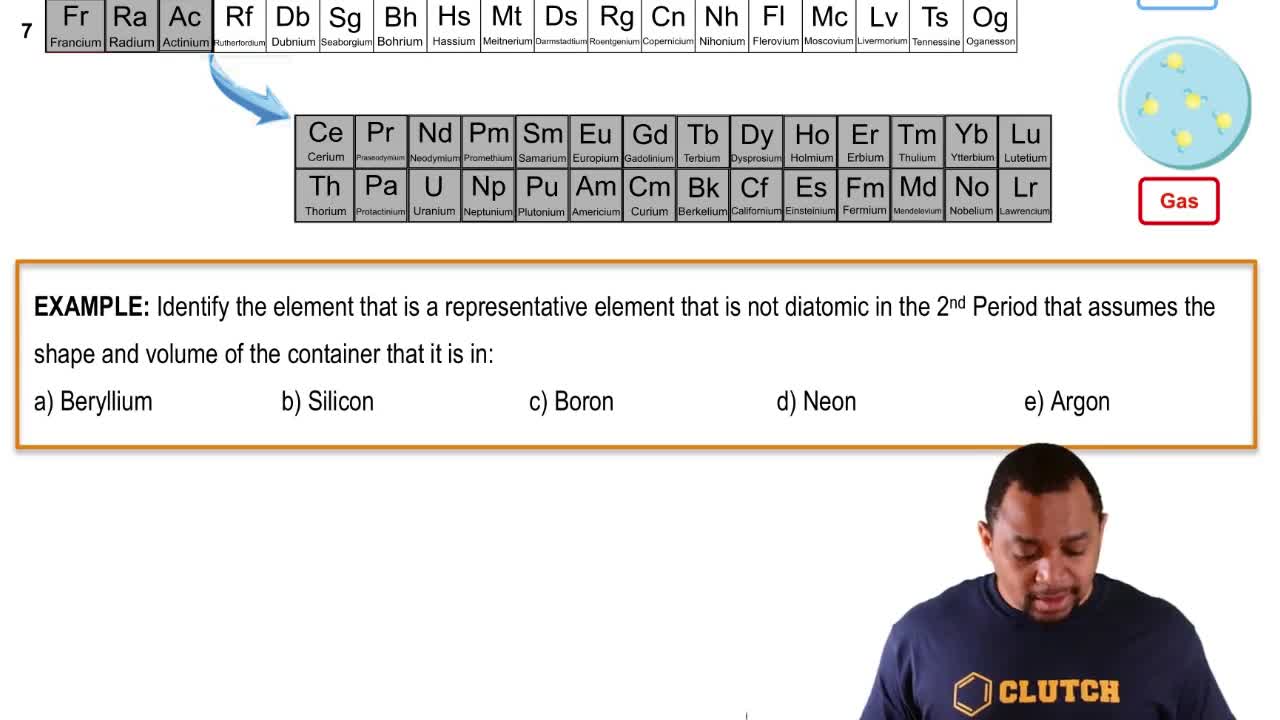Periodic Table: Phases definitions Flashcards
 Back
BackPeriodic Table: Phases definitions
1/15
Terms in this set (15)
- Periodic TableA tabular arrangement of chemical elements, organized by atomic number, electron configuration, and recurring properties.
- States of MatterThe distinct forms that different phases of matter take on, namely solids, liquids, and gases.
- SolidsA state of matter characterized by molecules that are closely packed and immobile, maintaining a fixed shape and volume.
- LiquidsA state of matter where molecules are close but can move freely, conforming to the shape but not the volume of their container.
- GasesA state of matter with widely spaced molecules that assume both the shape and volume of their container.
- Standard TemperatureA reference temperature of 25 degrees Celsius used to describe the state of elements.
- Standard PressureA reference pressure of 1 atmosphere used to describe the state of elements.
- Noble GasesElements in group 8A of the periodic table, known for being gases at standard conditions.
- MercuryA chemical element that is liquid at standard room temperature and pressure.
- BromineA chemical element that is liquid at standard room temperature and pressure.
- Synthetic ElementsElements created in laboratories, often with high atomic numbers and unpredictable states at standard conditions.
- Molecular ArrangementThe organization of molecules in a substance, influencing its state of matter.
- Atomic NumberThe number of protons in the nucleus of an atom, determining the element's position in the periodic table.
- Electron ConfigurationThe distribution of electrons of an atom or molecule in atomic or molecular orbitals.
- Unstable ElementsElements with high atomic numbers that have unpredictable states due to their instability.


